Marcel van Marrewijk's Blog, page 107
October 18, 2017
Expert Selection: Decentralized Governance
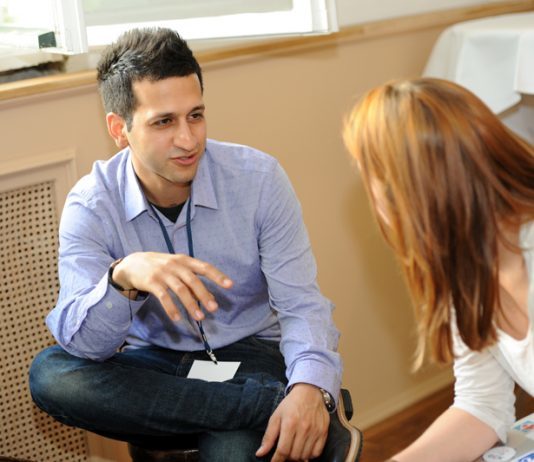 Amin Rafiee
Amin RafieeAmin has been working closely with the developers of some of the most hyped-about coins on the crypto market since 2013. He’s an active user of bitcoin communities and a respected member that is constantly involved with the dedicated developers and leaders of this exciting industry. With a keen eye for the latest advancements and a diverse background, including Industrial Design, Engineering, R&D, Marketing, International Business, Philosophy and Psychology, providing a strong foundation to understand and communicate with a large number of members across different fields. A regular speaker at Bitcoin conferences throughout Europe, Rafiee has been helping share the truth, freedom, and choice that Bitcoin and its partner platforms have to offer. The most recent example of this was through BITNATION’s refugee aid. Rafiee is an advocate of P2P and decentralization in an otherwise centralized world.
Just watched TIS.tv: Bitnation – The virtual country | Shift
According to Simone de Bruin ‟Here co-founder Erik Vollstädt explains BITNATION and decentralized governance as an…www.tis.tv
“This video involving one our founders, Erik Vollstädt, was covered by the German’s international broadcaster Deutsche Welle (DW). I believe this video really puts the concept of BITNATION and decentralized governance into an easily understandable notion. It also covers some basic information of the historical involvement of governments and progression of virtual states.”
Just watched TIS.tv: BITNATION Geograhical Apartheid
According to Simone de Bruin ‟In 13 minutes, here’s the story behind Suzanne Tarkowski Tempelhof and the inspiration…www.tis.tv
“BITNATION was initiated by Susanne Tarkowski Tempelhof in 2014. Since then it has really inspired thousands of minds around the world. This video shows her story, the concept and the global perspective from both a political and social perspective. A world that is unfairly determined by the geographical location of your birth.”
Just watched TIS.tv: EU Brussels, Blockchains for Social Good | BITNATION | Amin Rafiee
According to Simone de Bruin ‟Amin Rafiee (BITNATION) discusses how the Blockchain might help refugees with…www.tis.tv
“This was a talk I did at the European Commission on the social benefits provided through BITNATON and other blockchain based platforms. It explains how Blockchain can help refugees throughout Europe and also globally, taking into consideration the possibilities of global citizen identifications, bitcoin based debit cards and other means that can really help stateless individuals.”
Just watched TIS.tv: Andreas Antonopoulos DevCore: Bitcoin, the Bubble Boy, and the Sewer Rat, a…
According to Simone de Bruin ‟Blockchain legend Andreas Antonopoulos discusses the security of isolated Blockchains…www.tis.tv
“When we consider the concept of closed source vs. open source, we tend to forget the amazing benefits that are provided by an open source environment / software. Case in point would be Linux vs. Windows. Linux running on the same kernel can be used — and is used — in defense systems, global banking systems, satellites, home appliances to your Android phones and very secure super computers. Whereas Windows is used in the desktop market and only due to the trend instead of providing anything better or more superior. This concept should be considered when we take into account any attempt of creating a centralized system. An open system is a system that has stood the test of nature. I believe Andreas Antonopoulos really puts this into a understandable manner in this talk.”
Just watched TIS.tv: Amin Rafiee | #IAMBlockchain | IDnext Utrecht Nederland 2017
According to Simone de Bruin ‟Here Amin Rafiee (BITNATION) introduces decentralized governance, and his view on how the…www.tis.tv
“This is my latest presentation. I believe this puts into contrast the errors of the regulated sectors in the world. How financial institutions and service providers as large as LinkedIn, Yahoo and many others have fallen victim to global hacks and in turn loosing valuable and highly private information that should have been encrypted in the first place. Furthermore, it provides a basic introduction to decentralized organisations, governance and innovations that have allowed people to earn from their content, support and moreover be able to share information without the need for a middle gateway such as an ISP (Internet Service Provider) or existing governments. People helping people and managing themselves and in turn empowering both individuality and collectivism.”
The post Expert Selection: Decentralized Governance appeared first on Seats2meet.
Machine Learning for dummies
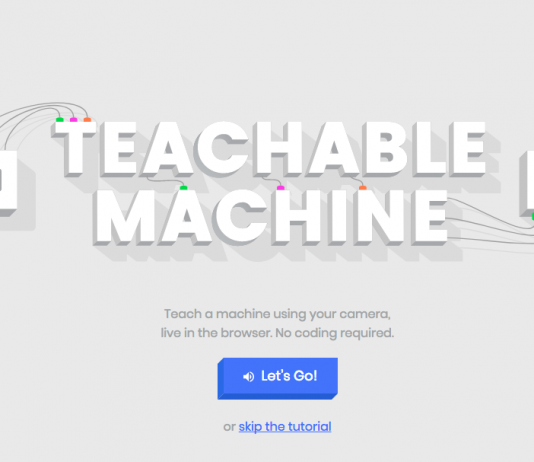
There is a lot to keep up with lately. I mean, I already feel like a 70-year-old lady, still trying to learn HTML when there is a new code language coming up every week. And of course, you can just let it be, make use of the technology around you and now really understand how it works. Following a few things can help you out in the future, like knowing how to make use of it for your expertise area! So let’s try to keep up, shall we?
For machine learning, Google just launched a website so you can test some interactions. There you can train the website to have a certain reaction to what you are doing on your webcam. A cool and simple example someone created is the Hand moo. Everytime you open your hands, your computer makes a moo sound! You can see it below.
You can learn and create those interactions on the Teachable Machine website. It’s effortless! And in case you are wondering why would someone teach a computer to make a moo sound whenever you imitate a cow with your hands, well, this is only the beginning. The whole purpose of showing every person how to use that technology is that everyone can have their own insight on it. I already thought that it would be cool to teach my computer that if I make a specific unusual gesture (I haven’t thought about the gesture yet), the machine could call 911. What would you like to teach your computer to do?
The post Machine Learning for dummies appeared first on Seats2meet.
October 17, 2017
Applying Marketing Strategies to Dating
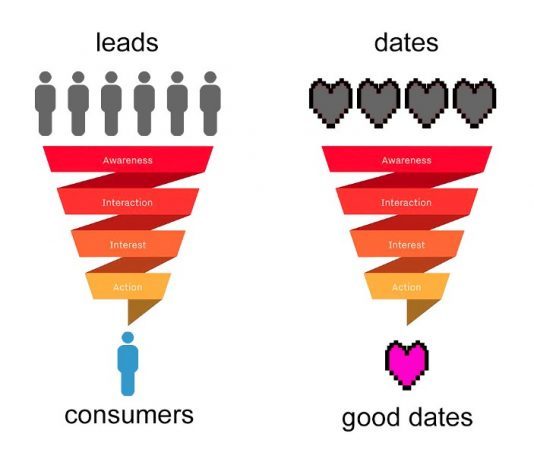
“So tools like sales funnel, and lean prototyping could be useful when you think about dating. You know, you need to have more dates if you want to have good dates, same with leads and final consumers. It’s a matter of logic” — said a friend of mine, staring me with his gold coin-shaped eyes.
I got the idea — and it made sense. Still, I was frowning, there was something wrong. Hearing this felt like liking sandpaper.
My friend guaranteed he was not talking about those dehumanizing Pick-Up-Artist techniques and honestly I never thought he was. He’s not that kind of person, but he’s definitely a businessman (strong handshake all that jazz). He told me it was just adding a tool to the toolbelt. The tool itself doesn’t come with morals, homie! You can use a hammer to kill your neighbor, but you have to be fucked up in the first place. It’s not the hammer’s doing.
True. Nonetheless, I cringed. The more I agreed, the more it felt like chewing glass.
So I marinated it for a couple of days.

hhhhhmmmmm why does it feel so dreadful? It makes sense!!
Rationalization — the empire of the useful
Of course, I could see how one could benefit. Especially shy people — having a guideline can really help you set things in motion and actually go there get some goddamn dates. This could even help facing the cold cold catacomb of rejection — if your metaphor is sales, you know many people will not “buy” you and that is perfectly ok. It’s part of the machine.
The power of “I have enough planning to move my ass” was a sweet song.
I also remembered Amy Webb’s fantastic TED Talk in which she tells the tale of how she used applied statistics to hack OkCupid’s website. This woman is a powerhouse! Magnificent!
She did all sorts of weird tinkering and testing, including a rating system for prospect dates, creating fake profiles and test which words worked. All of this is also cringy at first, but she did find love! She’s happily married to a guy she met over there (he had a really high rating, good stuff).
So why not? Because brains are complicated.

sure, Casio, sure…
It’s impossible to think outside the box
Let’s talk about brains.
Imagine paying attention to every single thing you senses are capturing right now: every colour, every shape, every sound. Now imagine doing this while also recollecting all of your memories at once. First kiss, second math test in 7th grade, last Friday’s breakfast, everything. That’s more noise than a Pantera concert.
Point is: one of the major functions of our brains is filtering. The brain filtering process is putting things in boxes.
When you enter your room — BAM! Your brain automatically dilutes everything into a single “room” chunk, so you don’t have to think about every little object individually. Then, when you decide to grab your book from the shelf, your brain focuses on the individual “book” chunks in front of you, while giving less attention to everything else.
Brilliant process, right? Not having this system would probably feel like a neverending bad acid trip.
But it’s also the same cognitive process that made possible for a human to associate “black person” and “slave” without a second thought. Clearly we must be very careful about our cognition — specially when it comes to people.
We’re like cats, we are naturally driven to boxes. But unlike cats we have a saying on which boxes we use.
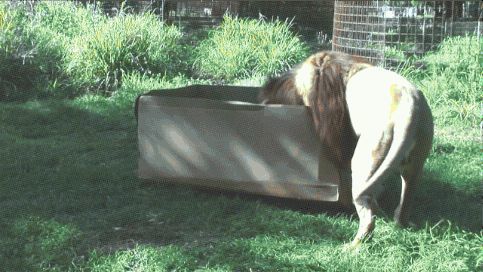
if I fits, I sits!
The lens of truth
It is easy to write and to read that every single human is as complex and as multifaceted as you are. Understanding this fully, though, it’s very complicated — many would say impossible.
I don’t think it’s a matter of empathy — do you think that a lot of cute cookie-baking grandmas hate minorities because they don’t care about people? The problem is somewhere else.
So where? Imagination (lack of, actually).
Our brains are far more wired to understanding and processing information than creating new information. So when you give yourself the challenge to imagine somebody else as complexly as yourself, it is an impossible imaginary feat.
We don’t have the means to simulate somebody else in our brain. We lack the processing power. Still, the exercise counts — it’s the exercise that end up revealing our internal boxes.

who deserves complexity and who does not?
Simplifying and Complexifying
The brain is designed to do many things and it pretty much works as a muscle — you exercise certain parts and they can do more and more. The filtering part is constant and powerful. The creative part is also a normal process, but far more on-demand.
So when your brain grabs a piece of information and make it simpler, easy peasy! It’s something it does all the damn time. The other way around, though, when you grab something simple and use imagination to attribute complexity to it, it is a far less trained muscle.
Now we can go back to dating.

get riiiiiipped
You don’t want to date a number
Here’s my cringe treasure cove: once you turn a prospect date into a number in a “dating funnel”, it is possible to reverse the process — but it requires a lot of energy.
Some people — like Amy Webb, the human algorithm — can do it. But we have no idea how much energy she had to spend to turn a really good rating into a husband. We have no idea if she still struggles to not compare him to “other ratings” the meets around. Numerifying can have permanent side effects.
So while it’s true that hammers don’t come with social stigma, I think lenses kinda do. Give two different people widely different lenses — let’s say a macro lens and a wide angle — and tell ’em to take a picture in the mirror. In the first, we’ll only see a nose. In the second, we’ll see a tiny person and the whole saloon around.
And just for the record, if you’re fucked up enough, you can kill your neighbor with basically anything. Even a solid pair of lenses.

easier to subtract than add stuff.. nobody wants your “for dummies” version
This is a work in progress
Instead of just bashing, growling and shrieking to the dark night sky, I tried to view this reflection exercise as an opportunity for learning. Even if I really like shrieking.
Now thinking about it more clearly, marketing has tools like the empathy map that actually encourages people to imagine others complexly. I’m sure there are many possible paths to follow from here.
But I could use some help. Not really with dating (I’m blissfully out of the Tinder Samsara) — but with complexity kaleidoscopes.
Do you know any tool (marketing, music, engineering, holistic medicine, VR programming: any field really) that actively encourages the user to have a more nuanced view on other people? If so, I’d love to give it a look.
If you read this text ‘till the very end, please leave a comment with the name of your favorite fruit + a sauce that would make it absolutely gross. Like barbecue passion fruit *shivers*. And of course — please, leave your tool recommendations as well.
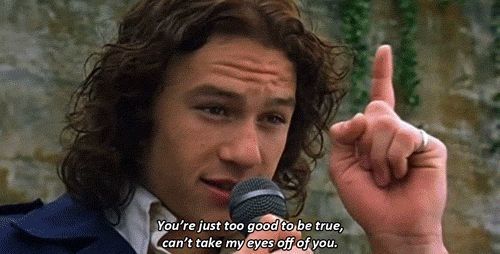
musical background is generally a good tool
To read more of my articles go to medium.com/@joriam
The post Applying Marketing Strategies to Dating appeared first on Seats2meet.
Interview with Jorn Vetter from KantoorKaravaan

In the last year, KantoorKaravaan (caravan office) have been sharing with us their adventures taking their office with them wherever they go. They have been in a rural coworking and coliving tour through in Spain and taught us a lot about how traveling doesn’t need to be something you do every once in a while, but it can be a constant. In this journey, they got the admiration from the coworking community winning the Coworking Europe Conference Award for Best Design. Today they are initiating a new adventure, and before they hit the road again, we had a great interview with Jorn Vetter, one of the members of KantoorKaravaan.
Could you tell us a bit about KantoorKaravaan?
KantoorKaravaan creates custom outdoor office spaces for social enterprise and sustainable business. Our aim is to make efficient use of the abundance of nature and technology, to create a place for out-of-the-box thinking, feeling and doing. In doing so, we make use of our off-grid units, Vintage Caravans equipped with solar, WIFI, desk and coffee-machine. We are currently on our way to interlink people, places and programmes throughout Europe, that align with this philosophy and can help make the transformation of modern working life, a reality.
How did you come up with the concept?
The KantoorKaravaan was initiated by a group of like-minded people, about three years ago. They noticed a growing number of flex-workers, freelancers and digital nomads looking for a different place to work. These people were subconsciously liberating the idea of what an office should be like. Looking at this trend, the founders asked themselves a question: if we could pick any place to work, where would it be? In Nature of course! The growing complexity of urban systems limits the opportunity for people to integrate nature into their lives. With this thought in mind, the first mobile office was built, a vessel that would give people the freedom to make Nature, their office.
And where are you going in the future?
We have now been on the road for almost three years, expanding our ‘fleet’ with another four caravans and working with a great diversity of clients and partners. We are now in a position where we would like to expand our network of members and clients, professionalize our approach and increase our scale. For this purpose, we’re looking to team up with individuals, groups, and organizations that can identify with our philosophy and are interested to collaborate. As a collective, we can realize the dream of a well-established network of outdoor office spaces.
Do you have a cool story of an adventure with Kantoor Karavaan to tell us?
We want our offices to be spaces where people feel free to be creative, solve complex problems or develop new ideas. Sometimes we succeed, sometimes we don’t. Once, we were based in Utrecht (@metaal kathedraal) and we were receiving a scout, from a company that was interested in working with us. Unfortunately, in our enthusiasm, we forgot to mention that we were out in a field.. a very muddy one, on that particular day. After two instances of disappearing knee-deep into the mud, wearing stiletto heels for the day, she told us she felt compelled to consider some other options.
How can people work in KantoorKaravaan?
People can book one of our units for one or multiple days of outdoor work either as a group or as an individual. At present, we’re also focussing on personalized products and services. We’re highly interested in how our clients envision their dream work-space, and what we can provide to make this a reality.
How can people follow you through your trips around the world?
We are currently active on:
Facebook: www.facebook.com/kantoorkaravaan
Instagram: www.instagram.com/kantoorkaravaan
Twitter: www.twitter.com/kantoorkaravaan
Webpage: www.kantoorkaravaan.nl
You woke up, looked around and noticed you transformed into an island. Describe yourself.
I am a moving island, perhaps sitting on the back of a turtle, home to all species and adaptive to all climates. I’m probably volcanic too, disruptive, yet never really destructive.
I’m pretty sure that there’s coffee and peanut butter somewhere, and everyone lives a solar-powered life.
In a short sentence, describe what you used to be, but you’re not anymore.
We used to be travelers, always on the move, only rooted in the outdoors. Instead of changing ourselves to fit in, we’ve embraced it and called it work.
The post Interview with Jorn Vetter from KantoorKaravaan appeared first on Seats2meet.
In the spotlight: De Broekriem
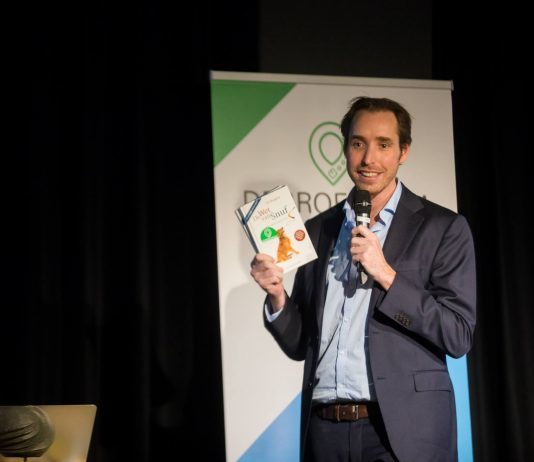
Pieter Vermeer vertelt het succes van: De Broekriem
De Broekriem is ontstaan toen ik met een aantal ‘lotgenoten’ bij S2M zat.
We spraken wekelijks af voor een kop koffie, samenwerken en tips uitwisselen en ook om even van huis te zijn.
Eigenlijk ging dat zo goed, dat we steeds beter gingen samenwerken, steeds vaker gingen afspreken. Op een gegeven moment wisten we dat we iets te pakken hadden, een formule, iets dat werkt.
Vlot daarna ontmoette ik Elmar tijdens de lunch. Hij kon ‘dingen met WordPress’ (ik kende het woord ‘Wordpress’ toen nog niet eens). Hij hielp ons destijds onze website te bouwen. Inmiddels is Elmar een knowmad, die de wereld rondtrekt met zijn unieke concept. En wij schreven ons eigen succesverhaal vanuit Utrecht
Dat er nu wekelijks overal in Nederland groepen mensen samenkomen in zaaltjes om elkaar te ontmoeten, dat noem ik succes.
Wij faciliteren dat werkzoekende mensen elkaar kunnen ontmoeten. Ik maak niet zelf die ontmoetingen mogelijk, maar ik faciliteer een platform waarbij mensen elkaar kunnen ontmoeten. Inmiddels doen we dat door wekelijks tientallen bijeenkomsten te organiseren verspreid door het hele land. Waarbij werkzoekenden samenkomen om met elkaar aan de slag te gaan. Soms doen we dat bij S2M locaties, maar soms ook in buurthuizen, bibliotheken of andere plekken.
S2M is gewoon een wondere wereld.
Zelf zie ik niet meer dat het een wondere wereld is. Ik kom er nu een aantal jaren en verbaas me niet zo snel meer. Maar elke maand nodigen wij weer nieuwe mensen uit, die bij ons actief worden in onze community en die denken: Hoe werkt dat nou? Hoe kan dat nou gratis zijn?
Het gaat er niet om dat het gratis is maar dat je op een andere manier waarde creëert.
S2M laat zien dat je samen met je netwerk veel voor elkaar kan boksen. Dat sluit ook helemaal aan bij de filosofie van De Broekriem; een wereld die dingen mogelijk maakt, die mensen vaak niet hadden verwacht. Zonder S2M030 was de Broekriem niet geweest wat het nu is.
S2M is de katalysator geweest van het begin van onze community.
The post In the spotlight: De Broekriem appeared first on Seats2meet.
October 16, 2017
Bundles and Moyee Coffee get together to create the most sustainable coffee subscription
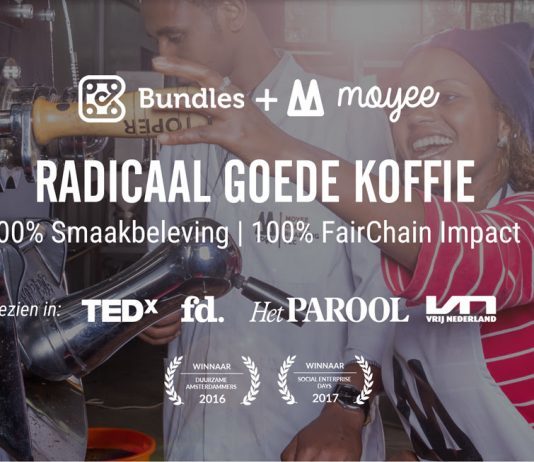
Bundles.nl is a service that allows people to rent washing and drying machines in the Netherlands. They also provide maintenance services, and to keep it sustainable they deliver the devices with the best energy rating there is. So yes, you also save on your bills!
This month they went beyond and partnered up Moyee Coffee. The company’s mission is to have the best quality coffee and give back to the community that produces the coffee in Ethiopia. That means that the coffee is not only cultivated there, but it is also toasted and packaged there, creating more jobs, and value for the local community.
Ok, that’s cool. But how do I drink this coffee? Well, with the practicality of professional coffee machines, made by Siemens. Siemens developed a coffee machine which is completely in line with Bundles ideology. That means that beyond the quality of its coffee machine, Siemens is also offering to maintain, repair, refurbish and recycle all the machines.
And what makes the subscription smart? You can connect your machine to the internet, and they will take care of providing you the coffee when there is a lack of the same. You don’t have to worry about coffee ever again, have a responsibly produced coffee and not for the same price as the market offers. What else have you asked for, right? You can subscribe for the pilot here.
The post Bundles and Moyee Coffee get together to create the most sustainable coffee subscription appeared first on Seats2meet.
More About: Social Innovation

Power To The People
Social innovation challenges societal and environmental issues in support of social progress. It’s about finding solutions for social challenges, such as refugees & immigration, marginalization, health, corruption and environmental issues. These social changes can come from (a collaboration between) universities, governments, businesses and the non-profit world. But what’s the worst thing about social innovation? It’s often invisible and only a few other people in your locality have heard about it. That’s why we had to put social innovation in the spotlight! Show what innovators from all over the world are doing to make our world a little bit better.
Against corruption and illegal operations
In this music clip you will hear about the Indian initiative I Paid a Bribe, which hopes to tackle corruption by letting citizens anonymously report on actual corrupt acts. The reports will later be used to argue for improvement of governance systems and procedures. In Kenya the Uchaguzi initiative was formed by Ushahidi and Hivos to monitor the constitutional referendum and safeguard fair, peaceful and credible elections. Similar to I Paid a Bribe, voters are asked to report anything suspicious during the election process to enhance transparency around the elections and encourage citizen participation in democracy. Another example of active citizenship is Mobile Justice CA which asks bystanders to report on police injustice in their area.
We also have two clips that record the fight of indigenous people against large oil, mining and logging companies which are destroying their living grounds in the Pastaza province in Ecuador and the Amazon basin. They are combatting the multinationals with new technologies, such as drones, trying to capture illegal activities on camera.
Empowering (marginalized) people
We’ve seen quite a few of powerful of examples of empowerment, such as the Open Cinema movement, which gives homeless people the chance to attend film clubs and make their own films to express their creativity. Below you’ll find some more examples of empowerment divided into different categories.
Empowerment for the needy
In Nigeria poor soccer clubs now can opt for Pavegen kinetic football groundsthat generate energy for the lights at night by just playing on it. Another initiative we specifically like is the Plastic Bank, which turns plastic waste into currency. Basically, it enables the exchange of plastic for money, items or services to help people living in poverty build better futures, while at same time stopping the flow of plastic into the oceans. This same principle is applied by doctor Gamal Albinsaid who lets his poorest patients pay for his services with a bag of garbage in Indonesia.
Women empowerment
Lensational is a great charity by Bonnie Chu which teaches (illiterate) women how to express themselves via photography. It’s aimed at women in the developing world and empowers them both emotionally and financially to improve their quality of life. Solar Turtle, a South African social enterprise in renewable energy, trains women to become entrepreneurs of their own micro-franchise, making them economically independent while investing in future generations. In Bangladesh the Grassroots Women’s Platform (Polli Shomai)has worked on improving the position of women. Bangladeshi women are given the opportunity to raise their voices, get better access to local services and take action against inequality.
Empowerment for people who are blind or deaf
There’s also a vast number of social enterprises that are about empowering people who are blind or deaf. Two of these rely on the help of the crowd; BeMyEyes is an app which connects a blind person with someone who can see via a live video connection for some extra help navigating or simply recognizing date stamps on food products. The Chabla app works similar, but is more specific: it connects deaf people to interpreters who speak the sign language of that country. The last invention we want to point out doesn’t rely on other people, but on artificial intelligence. Microsoft has recently introduced the Seeing AI app which helps blind people navigate the world by turning everything into sounds. The app can recognize your friends and their emotions, read text out loud and identify bank notes. If you want to see comparable innovations, it’s worth checking out our Health section.
Building active citizenship and communities
It’s good to see many initiatives popping up in which ordinary people are given the choice over local public projects and budgets. Watch the example of participatory budgeting in Chicago’s 49th Ward, which follows community members pitch ideas, team up and craft proposals for infrastructure projects. Or the amazing Detroit Soup in which people come together for a meal and discuss and vote for creative community projects which are funded through the entry fees people have paid. And don’t forget about Play the City, which allows different stakeholders to come together to discuss urban planning in a playful manner.
This last one is an initiative by Hivos which strengthens and links creative networks and methods for social change in Indonesia. In the CreativeNET video you can see how social innovation impacts small communities in Yogyakarta and Bandung.
Open access to education
The Internet has opened many doors for education and spreading knowledge. People can read up on the latest information in Wikipedia for free (even if you don’t have money to pay for mobile data, check out Wikipedia Zero), can share their knowledge about any kind of topic, like sustainable development (Architecture in Development) and work together on open source projects, such as this Global Village Construction Set for farmers. And do watch this video about DoNotPay Bot, an AI system which empowers everybody without a legal background to appeal parking tickets.
But what of regions with no or little internet access? That’s when companies like Kolibri come in. They provide a high-quality e-tech solution for low-resource communities. Their tablet can download content in an area with Internet and later spread that content to other devices via an offline local network. We also suggest you watch the WISE Award videos which shine a light on great education projects. Take Education for Growth and Value Creation for example which supports the socio-economic status of rural Lebanese women through vocation training in tourism.
Improving access to basic needs
Luckily, we have a long list of innovations which help people get better access to food, water, electricity, sanitation and shelter. Did you know people can get water from an ATM in Kenya? Pay per use with your smartphone to get running water in your home with City Taps? Harvest water from the air with Warka Towers in Ethiopia or with CloudFisher nets? Solar polar can help to purify rain water with SOURCE by Zero Mass Water or by the Watly machine which at the same time also provides Internet connectivity to a whole community?
When looking at safety and shelter, you come across the Lumkani fire detection system which alerts the whole slum community and The Mobile Factory which recycles rubble left after natural disasters and processes it into strong LEGO-like blocks to rebuild homes in Haiti. A similar process is underway in Gaza where Majd Al-Masharawy founded Green Cake and makes block out of ashes. And while the Moladi construction technology helps to build one house a day with local material and labor, Better Shelter builds temporary and safe refugee shelters to create a home away from home.
For food, we’re looking at the innovative ACE1 cookstove, which has many benefits like smoke-free cooking (a silent killer!), reduced costs for fuel and its solar panel stores enough power to charge mobile devices and LED lighting. In Indonesia and around the world Hivos is helping people to start cooking with biogas. Here’s a short item that explains the impact of the traditional cooking fuels to biogas on families. Or why not start solar cooking and prepare food with only the power of the sun?
Last but not least, check out the Emergency Sanitation Operation Systemwhich offers better hygiene to people in disaster zones. The smart toilet runs on solar power and recycles urine into irrigation water. It also provides UNESCO and other institutions with data on what people’s needs are in that area.
Must watch:
If you simply can’t get enough of social innovation, we recommend you to watch the following videos as well:
Venster literally provides a window to the outside world nursing home residents;
The 1% Club platform connects people from developing countries with people from all over the world who can help them to build a local enterprise or project with knowledge and resources;
Riders for Health is an organization in Kenya that teaches doctors and their team how to fix motor cycles to prevent downtime, which helps them to continue offering health services;
The Shoe That Grows is adjustable in size and helps children living in developing countries enjoy their shoes longer.
Watch more Social Innovation videos
The post More About: Social Innovation appeared first on Seats2meet.
October 15, 2017
Seats2meet for locals – De DAME
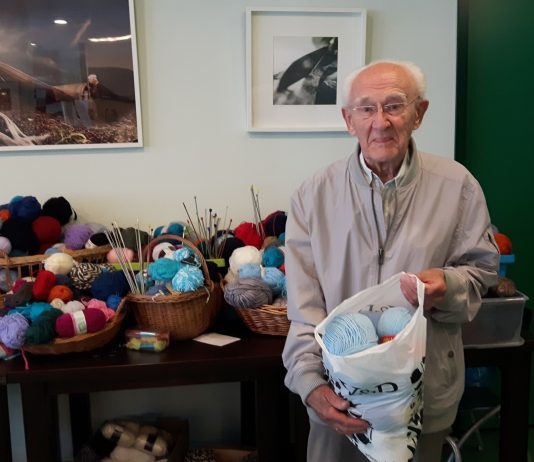
De Dame Breit in het Stadskantoor Utrecht
De broer van de burgemeester kwam volgens eigen zeggen tot ‘een broddelwerkje’ en
wethouder Kees Diepenveen liet zich met liefde leiden door Riek Baron, bewoonster van
wooncomplex De Dame. En hij kwam tot een mooie aanzet voor een lapje.
Op uitnodiging gingen 25-9 een aantal fanatieke breisters van het project: “Ouderen
grijpen de pen: Aandacht voor eenzaamheid” naar het Stadskantoor om met de
medewerkers te breien tijdens de lunch. Op de elfde verdieping werd gebreid door zo’n
30 man.
Sinds de start van het breiproject op 7 juni zijn er nu, 6 oktober 2017, ruim 400 lapjes
gebreid en er zijn zo’n 30 wol donateurs die De Dame wisten te vinden. En het maakt, naast oude dekentjes en onaf gebreide truien, heel wat los. Na meerdere oproepen in het AD, De Telegraaf en RTV Utrecht om wol te brengen kwam De Dame zowel ‘in the picture’ als dik in de wol te zitten. En dat leverde mooie ontmoetingen op tussen bewoners en mensen buiten De Dame. En dat is misschien nog wel de mooiste bijvangst: het gaat immers om aandacht voor eenzaamheid, ofwel zorgen voor verbinding tussen mensen, en dan is het juist goed als er mensen ‘van buitenaf’ naar De Dame komen.
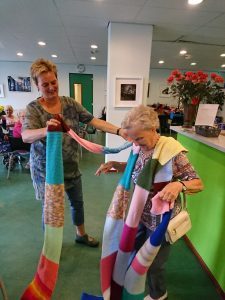
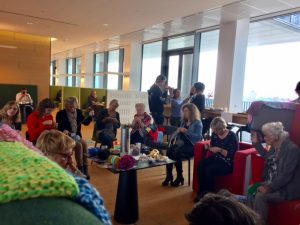
Mickey, weduwnaar, kwam wol brengen omdat zijn vrouw het project prachtig zou hebben
gevonden. Drika, bewoner van De Dame, is na 20 jaar weer begonnen met breien en weet
de ontmoetingsruimte te vinden om samen te breien. Thea, ook wonend buiten De Dame,
breide onlangs haar derde lapjesdeken en Riek breide een meterslange sjaal ‘omdat ze toch
nog wol had liggen’. Kinderen en kleinkinderen komen de oude breiwerken van overleden
oma’s brengen.
Wil je meedoen? Dan kan dat natuurlijk. Het is heel eenvoudig, bij De Dame zijn breipennen en er is voldoende wol. Je hoeft je niet aan een patroon te houden en kunt gezellig aanhaken op een woensdagmiddag. Maar je kunt natuurlijk ook breien vanuit huis! En je werkjes inleveren. Haak vooral aan, het is niet moeilijk, wel leuk!
Dus…brei een lapje voor de warme deken. Op 15-11 Breit De Dame Alles Aan Elkaar, want
vanaf dan worden de lapjes ingeleverd en start het flinke karwei om de deken te naaien.
Kom je langs? En boek meteen een workspace om te werken. De koffie staat klaar!
The post Seats2meet for locals – De DAME appeared first on Seats2meet.
Welk vervoer vervangt Uber? | Nieuw: het Airbnb hotel | De data ambassade van Estland
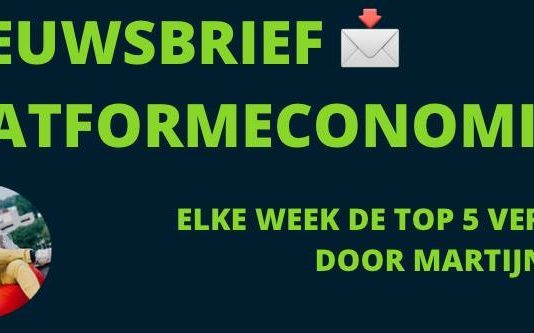
Afgelopen week had ik als ‘European Young Leader’ interessante discussies over de platformeconomie en de toekomst van werk op de ‘State of Europe high-level roundtable’. En omdat ik toch in Brussel was een tof interview gehad met SMart: een coöperatie die drempels voor freelancers verlaagd en collectieve voordelen biedt. De video komt deze week online. Deze week ben ik vanuit Deeleconomie in Nederland als partner aanwezig bij de ‘Reshaping Work Conference‘. Ook hier zullen in de volgende nieuwsbrief de eerste video’s worden gedeeld. Voor nu heb ik weer 5 mooie stukken van mijn gedachten en duiding voorzien. Fijne week!
 Mijn ‘uitzicht’ in Brussel.
Mijn ‘uitzicht’ in Brussel.Platformeconomie top 5
Uber and Lyft Haven't Solved the American Traffic Crisis—Yet | WIRED
De belofte van ‘ride hailing’ (het bestellen van een taxi via een app als Uber en Lyft) is dat deze ‘nieuwe’ vorm van mobiliteit bij zal dragen aan een ‘Mobility as a Service’ model waar toegang tot mobiliteit interessanter wordt dan bezit. Waardoor onder de streep minder auto’s worden verkocht en worden geparkeerd, met als resultaat een prettigere leefomgeving.
Uit dit onderzoek van de universiteit van Californië (the work is based on 4,100 online surveys distributed to a sample of Americans in seven big metros: Boston, Chicago, New York, Seattle, San Francisco, Los Angeles, and Washington, DC.) blijkt dat dit utopisch beeld nog lang niets is bereikt. En het zelfs zo zou kunnen zijn (de onderzoekers houden een slag om de arm omdat zij niet toegang hebben tot alle data en beweegredenen) dat ride hailing er op dit moment voor zorgt dat er juist meer auto’s op de weg rijden.
Een aantal interessante fragmenten uit dit artikel:
49 to 61 percent of ride-hailing trips wouldn’t have been made without those services to provide them. That means Uber and Lyft might not be taking fossil fuel-puffing cars off the road. They could be adding them on.
It doesn’t matter who owns the vehicle, it matters how many miles are driven on the road. So me swapping out a trip that I would have driven myself for a trip that I’m riding in is still the same number of miles.” In fact, she points out, it could be more, thanks to the time your Lyft driver spends zooming to neighborhoods with surge pricing, or idling about while waiting for fares. More time on the road means, potentially, more time for a car to release carbon emissions, or to get into a crash.
Extrapolated way out, this research looks more dystopian than friendly-Wilshire Boulevard-in-the-sunshine. Uber and Lyft could be contributing mightily to traffic. They could be choking downtowns with fumes. They could be helping, incrementally, to move affluent riders from public transit systems to privately driven cars.
Dit onderzoek bevestigd mijn vermoeden dat ride hailing in veel gevallen geen concurrent is van taxi’s. In dit onderzoek komt naar voren dat 1% van de respondenten bij de afwezigheid van Uber of Lyft voor het desbetreffende ritje de taxi zou hebben genomen. Onder dit item zie je de hele grafiek.
Het is belangrijk om te melden dat er een aantal variabelen nog niet bekend zijn. Wat ook in dit artikel wordt vermeld: “According to this and other research, ride-hailing does reduce incidents of drunk driving. In some cases—but not all—it competes with public transit. In some cases—but not all—it adds cars) to the road.”
Zijn deze uitkomsten an sich nu echt zo interessant? Als je de huidige situatie als eindpunt ziet: ja. Maar dat is natuurlijk onzin: we zitten in een mobiliteitstransitie die pas eindigt op het moment dat de zelfrijdende auto is ingeburgerd. Wat kun je hier dan wel van leren? Dat de verhalen van nieuwe ‘disruptieve’ innovaties lang niet altijd zo veelbelovend zijn (op korte termijn) als wordt gezegd. En dat het goed is om de ontwikkeling goed in de gaten te houden, te onderzoeken en te experimenteren hoe deze ontwikkeling in het huidige beleid en de huidige economie kan worden ingebed. Om op die manier de maximale potentie hier uit te halen. En dat is ook iets waar later in dit artikel nog op wordt ingegaan.
Dan als laatst: in de discussie rondom de toekomst van mobiliteit wordt in mijn ogen nog te veel nadruk gelegd op het technische stuk: de ratio. Dit terwijl we al lang weten dat wij mensen niet rationeel, maar emotioneel handelen. En dat als iets technisch misschien efficiënter kan er vaak veel variabelen zijn die in die gedachte niet worden meegenomen. In het kader hiervan is het interessant om het Volkskrant artikel ‘Zo veel voordelen, en toch zo weinig animo voor carpoolen‘ (Blendle link) te lezen. Daar leer je dat de praktische voordelen van het carpoolen (efficiënter, geld besparen, etc.) het in veel gevallen verliezen van de minder logische voordelen: het ongegeneerd in je neus kunnen peuteren en een rustmomentje wanneer je lekker in je eigen ‘cocoon’ zit aan het begin en eind van de werkdag.

Vakbonden én werkgevers niet te spreken over regeringsplannen deeleconomie – Knack
In een tussentijdse evaluatie van de belasting op de deeleconomie in België zijn de partners niet enthousiast. Hoewel ik zelf ook het een en ander heb aan te merken op deze regeling (zo wordt dezelfde arbeid die via een platform wordt geregeld gunstiger belast dan wanneer deze arbeid ‘offline’ wordt geregeld), denk ik dat het nu nog veel te vroeg is om hier iets zinnigs over te zeggen of het wel of niet goed werkt. En krijg ik het vermoeden dat door termen als ‘onbezonnen’ te gebruiker het best kan zijn dat de gevestigde partijen (met gevestigde belangen) ook niet veel baat hebben bij hebben bij en verandering in het systeem en macht. En juist dat de discussie zou moeten zijn….
Airbnb’s home-hotel hybrid will open in Florida next year | TechCrunch
Waar Airbnb oorspronkelijk draaide rondom het ‘benutten van onbenutte capaciteit’, weten we dat dit al lang in veel gevallen het geval niet meer is. Op zich niets mis mee, maar laten we die mythe dan ook maar direct begraven.
Dat ze een stap verder gaan, blijkt uit dit stuk:
“The company is collaborating with development firm Newgard Development Group to build a 324-unit building in Kissimmee, FL that will be branded as an Airbnb building. Tenants in the building will be able to rent their apartments or individual rooms (exclusively on Airbnb, of course) for up to 180 days of the year, and will be encouraged to do so. The first building will be called Niido, powered by Airbnb.”
Je kunt dus straks een appartement kopen dat is ingericht om regelmatig te verhuren via Airbnb. Alles in het gebouw is hier op ingericht.
Ook interessant, of misschien zelfs nog interessanter, is de vermelding van het ‘Friendly Buildings Program’, dat volgens dit artikel al in september 2016 is gelanceerd. Dit programma ‘allows hosts to share revenue from each rental with the landlord or building owner. <> On average, tenants share 15 percent of revenue with landlords/owners.’ Op deze manier krijgen huisbazen dus een extra incentive om Airbnb verhuur toe te laten (of misschien zelfs aan te moedigen) voor haar huurders. Ik kan mij voorstellen hier ook een interessant experiment in zit voor VvE’s waarbij de VvE profiteert van Airbnb verhuur in het pand. Dat zou een pleister kunnen zijn op de wonden van het overlast binnen een VvE.
Als je naar het grotere plaatje kijkt begint het duidelijk te worden dat veel platformen om de groei door te kunnen zetten en een stabiele ‘supply’ kant op te bouwen steeds meer in zullen gaan zetten op zekerheden van vaste en stabiele aanbieders. Als elke stad een Airbnb gebouw heeft zoals boven beschreven dat geeft dit een enorme stabiliteit voor het aanbod in de stad. SnappCar doet een beetje het zelfde door jou de kans te bieden een mooie auto te (private) leasen die je vervolgens in kunt zetten op het platform. Met logo en al. Wat er op zou kunnen wijzen dat in de ‘deeleconomie’ het aanbod van onbenutte capaciteit niet voldoende is om een alternatieve markt te kunnen aanbieden en de platformen op zoek gaan naar manieren om hun kern te verstevigen.
Uber, Airbnb Get Dragged Into Scandinavian Welfare Economics – Bloomberg
Het is altijd interessant om te zien hoe andere landen om ons heen omgaan met de opkomst van de platformeconomie. In dit stuk:
Denmark wants to bring the so-called sharing economy into its legal codex so that companies like Uber and Airbnb can be absorbed into the Scandinavian welfare model.
The Danish government sees little point in resisting the changes these companies represent. Instead, it’s putting forward a number of measures designed to fold the business concept into its tax and labor laws.
“If you want people to understand the prospects, in terms of new jobs and new technology, then it also has to contribute to the financing of the welfare society we live in.”
Kort samengevat: de platformeconomie wordt als iets onomkeerbaars gezien dat moet worden ingebed in de reguliere economie, waardoor ook de platformeconomie bij gaat dragen aan de welvaartsstaat. In het kamerdebat over de platformeconomie in onze eigen kamer kwam een vergelijkbaar beeld naar voren.
De EU mag wel wat harder rennen, vindt e-Estonia – NRC
Nu Estland voorzitter is van de EU staat de digitale revolutie plotseling bovenaan iedere politieke agenda. En dat is nodig ook:
“Volgens de Commissie zullen in de toekomst negen op de tien banen digitale vaardigheden vereisen, terwijl gemiddeld 44 procent van de Europeanen als digibeet te boek staan. Zij schat ook dat de EU 415 miljard euro aan extra inkomen per jaar laat liggen, als alles bij het oude blijft.”
In dit stuk lees je interessante weetjes over Estland als meest digitale land ter wereld:
“Zo wordt er in Luxemburg ‘een data-ambassade’ gebouwd: een plek in een datacentrum waarover Estland jurisdictie behoudt, met een backup van cruciale informatie zodat de digitale overheid bij een calamiteit kan blijven functioneren.”
Niet iedereen is overigens zo’n voorstander van deze digitaliseringsslag. Zo maakte ik afgelopen donderdag in Brussel nog een pittige discussie mee tussen een minister uit Estland en een aantal hackers en experts die van mening waren dat digitaal stemmen (wat ze in Estland al sinds 2009 doen) nooit 100% veilig kan zijn en dat hacker communities uit heel de wereld hier al jaren voor waarschuwen. Soms is een rood potlood dus helemaal zo gek nog niet….
Contact
Inspiratie opgedaan en advies of duiding nodig over de platformeconomie of op zoek naar een spreker?
Neem gerust contact op via een reply op deze nieuwsbrief, via mail (martijn@deeleconomieinnederland.nl) of telefoon (06-50244596).
The post Welk vervoer vervangt Uber? | Nieuw: het Airbnb hotel | De data ambassade van Estland appeared first on Seats2meet.
October 13, 2017
TIS Picks: 5 Top Fashion Videos
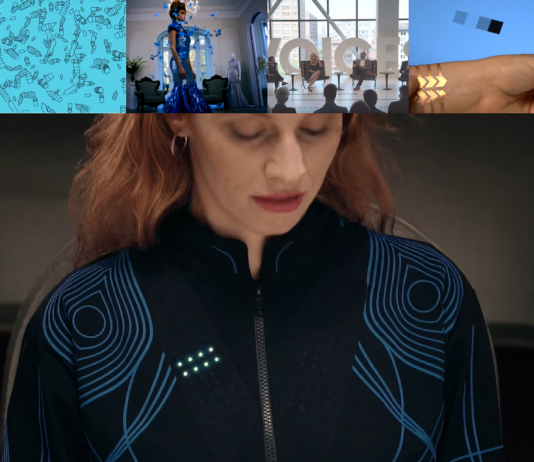
Starting with Fashion, a new theme for TIS.tv, we didn’t have a clue on how fascinating this past month would be. From Weaving Technology into Fashion (an Expert Selection by Pauline van Dongen), to sustainable apparel, functional clothing, open source fashion and personalized accessories. Here is our pick of the 5 best and most breathtaking videos on FASHION.
1. Moving butterflies dress
This dress by Turkish designers and sisters Ezra Çetin and Tuba Çetin incorporates Intel technology to let the dress interact with its surroundings. The Edison compute module will activate as soon as someone comes in direct proximity or when activated via a mobile app.
Just watched TIS.tv: The Butterfly Dress | Experience Amazing | Intel
According to Elena L. ‟Fashion studio Ezra+Tuba created a dress that senses proximity and releases butterflies en masse…www.tis.tv
2. Jeans from recycled plastic
The Dutch brand G-Star RAW started working together with singer Pharell Williams and the company Bionic Yarn to produce jeans from recycled ocean plastic.
Just watched TIS.tv: Pharrell Williams presents RAW for the Oceans.
According to Elena L. ‟Pharell Williams from Bionic Yarn and G-Star collaborate for this sustainable collection of…www.tis.tv
3. A functional temporary tattoo
MIT Media Lab and Microsoft + Open Source have developed a fabrication process which enables the user to create metallic tattoos. These prints made with golf leaf work as on-skin interfaces and can be used to display and store information on, or control, mobile devices.
Just watched TIS.tv: DuoSkin:Functional, stylish on-skin user interfaces
According to Elena L. ‟MIT partners up with Microsoft Research to develop metallic-looking tattoos, which are also skin…www.tis.tv
4. Sharing experiences
This London based firm, CuteCircuit, joined forces with the German Jungen Symphoniker Orchestra to create the Sound Shirt. An amazing piece of clothing that helps deaf people experience and feel the music they cannot hear. Must watch!
Just watched TIS.tv: The Sound Shirt | Junge Symphoniker Hamburg
According to Elena L. ‟Impressive wearable technology: The Sound Shirt achieves innovation by enabling death people to…www.tis.tv
5. Fourth Industrial Revolution x Fashion
How will artificial intelligence, virtual reality and 3D-print change the fashion industry? How will the Fourth Industrial Revolution affect the way we consume and communicate fashion? Watch this informative panel discussion by The Business of Fashion with Intel, Manufacture New York and World Economic Forum.
Just watched TIS.tv: BoF Voices | Fashion’s Fourth Industrial Revolution
According to Elena L. ‟Business of Fashion presents a panel discussion on the ways the fashion industry interacts with…www.tis.tv
The post TIS Picks: 5 Top Fashion Videos appeared first on Seats2meet.



